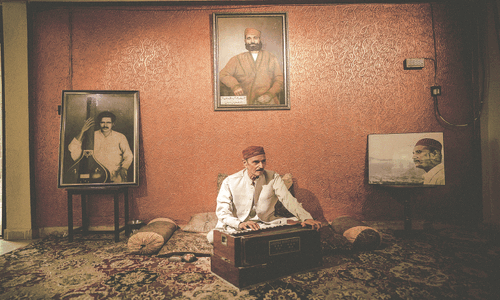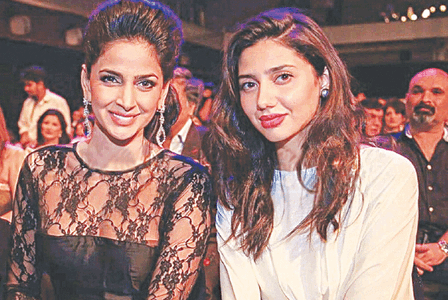
The Pakistan Pavilion at Expo 2020 Dubai has pleasantly surprised the world. It is being continuously featured in the top three to five pavilions-to-visit list by international media, critics and bloggers. The visitor footfall has matched this hype and the Pakistan Pavilion continues to be one of the most visited pavilions at Dubai Expo ever since its opening on October 1, 2021.
As part of the team that worked behind the scenes for the Pakistan Pavilion, I want to give you an idea about the challenges this project went through — a behind-the-scenes peek into what such a massive project entails. Had it not been for the passion and dedication of the team behind this project, we might not even have had a Pakistan presence at Expo 2020 Dubai.
The World Expo was taking place in the Middle East region for the very first time. But not many would know that Pakistan regularly participates in this most prestigious international event that is held after every four years. Never has Pakistan’s participation at such events garnered so much interest and attention, however, as it has this time. It’s simply because, in the past, never had such a creative, wholehearted, quality showcasing of Pakistan really been put together.
Initially, even this time round, things were no different than in the past. Earlier, the Pakistan Pavilion project had been awarded to a Dubai-based company by the previous government. When the government changed, the government’s adviser for commerce and investment Razak Dawood was handed over this neglected baby. He gave it the kind of personal love and attention it really deserved, all through the team-building, conceptualisation, creation and execution phase. He brought on board architect Shahid Abdullah as the project lead, who then put together a carefully chosen core team.
One of the team members that worked on the much-talked-about Pakistan Pavilion at the Dubai Expo 2020 provides a behind-the-scenes account of what went into creating the wildly successful spectacle
But the first and foremost big challenge was not creative; it was how to make this project financially possible. The construction costs were huge, though half of them were being footed by the UAE government. But the Government of Pakistan couldn’t fully support such an ambitious project financially and there came a time when it actually decided to pull out.

But Dawood and his team had other ideas and he personally reached out to the private sector and started private fundraising for the Pavilion. Almost 60 companies ended up contributing to this huge national cause, and it included companies from all kinds of sectors. Again, had this private sector fundraising not been done right, Pakistan might not have had this successful pavilion today.
A Board of Trustees was formed in tandem to this, comprising Yunus Bengali (chairman, The Indus Hospital), Mushtaq Chhapra (founder, The Citizens Foundation), Riyaz Chinoy (MD, Yaqin Steels) and Aslam Khaliq (chairman, Reckitt Benckiser Pakistan), in addition to Mehboob Khan and Shahid Abdullah from the core project team. These were people that the corporates knew would make sure that the funds would be duly and transparently spent on this national project.
Once the project was financially mobilised and given another lease of life, the team looked at the existing structure of the pavilion that was already ready in the last government’s tenure. They decided not to redo it too much, as a lot of work had gone into it already. The previous government’s chosen theme was ‘Emerging Pakistan’ and the company that had developed the pavilion structure had used inspirations from Pakistan’s mountains, forts and hills.
However, the structure looked quite bland and the team decided to do something about the exterior. This is when Rashid Rana, a top Pakistani artist (also the dean of Beaconhouse National University, Lahore) with international acclaim, was brought on board to bring his magical, artistic intervention to turn this bland architecture into a piece of art.
The glittering mirror-work façade of the Pakistan Pavilion that you see today is Rana’s handiwork, and has been a real crowd-puller. It just stops people in their tracks as they walk by, and has played an instrumental role in the success of the Pakistan Pavilion. It also, of course, caters to today’s social media age, making Pakistan’s one of the most Instagrammable pavilions at Expo 2020 Dubai.
The new ‘Hidden Treasure’ theme — hundreds of themes and titles were rejected before finalising this one — and the curation of the entire inner journey of the pavilion were made possible thanks to Noorjehan Bilgrami, another well-known Pakistani artist, who was brought on board for this project.
The ‘Hidden Treasure’ theme reframes the international narrative vis à vis Pakistan by highlighting the unique or little-known aspects of the country that rarely makes the news. Using its magnificent landscapes as the metaphorical fabric from which all other threads emerge, the Pakistan Pavilion creates an immersive, multi-sensory experience, through which Pakistan’s ancient history, ethno-religious diversity, rich cultural traditions, natural resources, and economic potential can be explored.
Although each thread is seen as a section into which the narrative is divided, all of these categories of focus are interlinked, thereby creating a seamless narrative and experience.

Again, the big challenge here was that the building structure already existed and the interior was designed like a labyrinth, so the different spaces had to be designed according to the existing peculiar sizes and shapes, so as to create a seamless journey in such a way that visitors could enter from one point and leave from another without being able to turn around.
As you walk into the pavilion, you come across an entertaining and engaging immersive film experience in each of the eight spaces of the pavilion. They take you through time, from the ancient Indus Valley civilisation to modern day Pakistan, revealing the area’s rich and layered history, culture and traditions, as well as the investment potential and possibilities the country holds for the future.
Seventy percent of the experience consists of audio-visual films being played on large ceiling-to-floor screens. In addition, there are some live exhibits in some of the spaces, such as the ‘Sheesha Kari — Pathway of Mirrors’. It’s a mesmerising experience created by light-and-mirror reflections. In another section, for example, a traditional houseboat used in the past on the Indus by the Mohanas of Sindh — a community that can trace its roots to the time of Mohenjodaro — was rebuilt. There was a lot of buzz in Sukkur about this boat that was built after more than half a century.
Imagine the challenge of recreating these hidden treasures of the past using archival material and reaching out to the right local craftsmen, then transporting all these exhibits to Dubai and putting them up there. A lot of Pakistani craftspersons, filmmakers, artists and musicians were engaged to give life to this creative, inner-journey experience.
The pavilion is open to visitors from October 1, 2021 to March 31, 2022, so running the pavilion for six months, in itself, creates huge challenges. Usually such events or experiences last only for a weekend or a week at most. The Trade Development Authority of Pakistan team, led by Rizwan Tariq, the pavilion director, deserves all the credit for making this possible in a seamless manner.
The Pakistan Pavilion has surely made Pakistanis proud. It has shown to the world a positive face of Pakistan, and helped change perceptions about the country. We can only hope that the effort and time put into this project pays off in the years to come, by encouraging tourism and investment in the country.
The writer is Managing Director at Bulls Eye Advertising (Pvt.) Ltd
Published in Dawn, ICON, January 30th, 2022


































